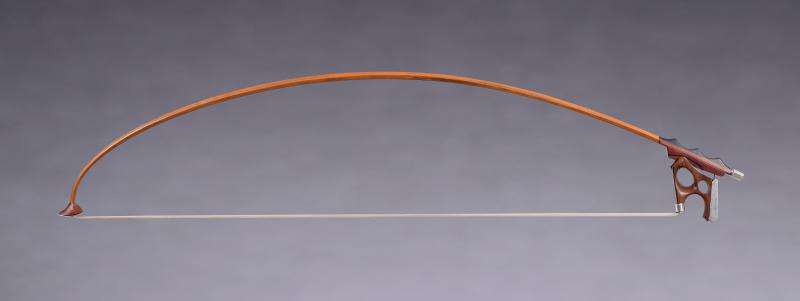Emil Telmányi

This special bow is the most exotic piece of our collection.
Emil Telmányi was a Hungarian violinist who settled down in Copenhagen in 1919. He constructed this bow there in cooperation with Knud Vestergaard, a Danish violin maker in 1949. Their intention was to use it for the authentic presentation of Bach’s pieces for solo violin.
The stick is significantly arched, and — like in modern bows — the tension of the hair can be adjusted with a screw which pulls back the frog. However, through a special mechanism the frog can be tipped towards the head with one movement, so the hair loosens and all the four strings can be played at the same time. When the musician tilts the frog back again it fastens and the hair becomes tight again.
In addition to being an interesting construction this bow is a beautiful piece of work.
The bow belonging to the Musem of Musical History is being presented at the exhibition in a freshly restored condition.



It’s worth to have a thorough look at the parts and mechanism of the special frog. It consists of two main parts: the part — let’s call it the slide — which is fitted to the stick and in the traditional way adjusted with a screw is made of pernambucco and jointed with the Hill method.
The other main component — let’s call it the lower frog — is connected to the slide through a bronze spindle and a thin spring steel pole.
The other end of the pole is part of a mechanism which is very similar to that of a ball-point pen or the switch of an umbrella. On pressure it either fixes the two frog parts together and fastens the hair or releases and allows the lower frog to turn towards the head and so the hair loosens. This way the musician can easily adjust the tension by tilting the lower frog.
The mechanism is covered with silver with VEGA BACH BOW REG — PATENT written on one side and KNUT VESTERGAARD VIOLINMAKER VIBYJ DENMARK on the other.
The lower frog is made of an exotic, middle-brown and dense wood I do not know. A thin ebony layer is glued behind the silver ferrule.
The hair is fixed — unlike the traditional method — with only a spread wedge. Both wooden and metal parts are of a beautiful finishing, photos can say more about the design than words. The only traditional components of the frog are the ferrule and the brass eyelet.







